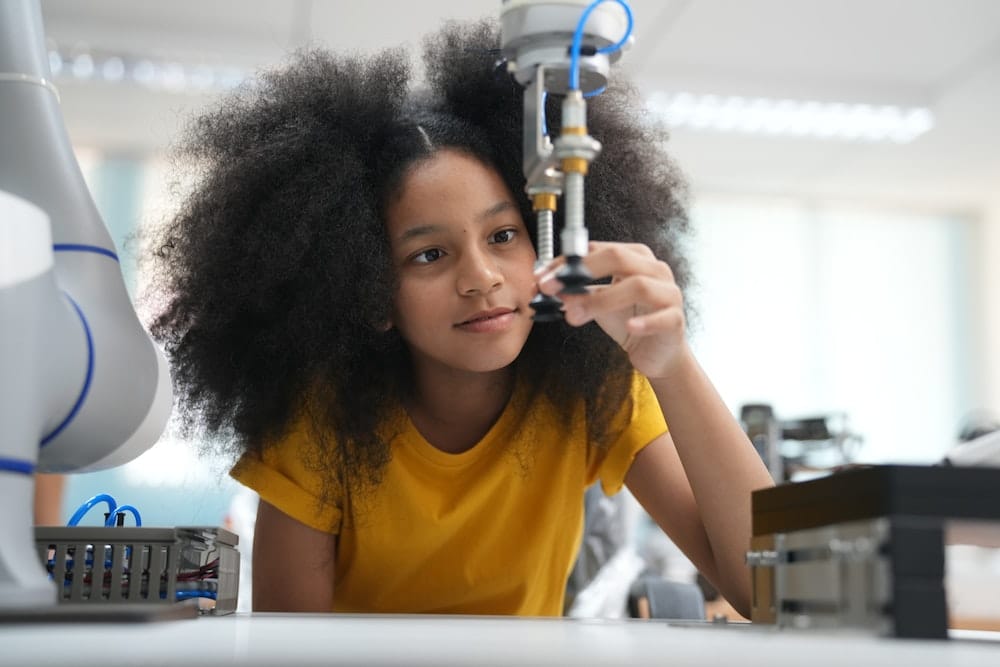As we cast our gaze into the future, the potential impact of synthetic biology on various industries, including real estate, is fascinating. But, you may wonder – what is synthetic biology? How can it be applied in the realm of real estate? Synthetic biology, often abbreviated as "synbio", is a multidisciplinary area of research that blends elements of biology and engineering. At its core, it uses biological components, such as DNA, cells, and biological systems, to create new, engineered biological systems. Now, the question arises, how might this innovative technology shape the future of the real estate industry?
Leveraging Synthetic Biology in Engineering Living Materials
To begin with, let’s delve into how synthetic biology can be harnessed in engineering living building materials. The concept of using biological materials in construction is not new. In fact, traditional building materials like wood and straw are biological in nature. However, the development of ‘living’ building materials, created through synthetic biology, is a novel idea.
Dans le meme genre : What are the best practices for incorporating adaptive outdoor spaces in real estate projects for year-round use?
Scientists in this field are working to engineer living cells that can be used to create self-healing materials. Think about it: a crack appears in a wall, and instead of requiring a manual fix, the material self-repairs. This could significantly reduce maintenance costs and increase a building’s longevity. The approach involves engineering cells, typically bacteria, to produce a specific response to environmental stimuli. This new development is a remarkable shift from passive to active materials that can respond to changes in their environment.
The Role of DNA and Cells in Synthetic Biology
DNA and cells are the building blocks of life and, by extension, the building blocks that form the cornerstone of synthetic biology. It is through the manipulation of these components that scientists are able to engineer entirely new biological systems.
A voir aussi : How to leverage gamification in real estate development to enhance community engagement and participation in planning?
For example, Deoxyribonucleic Acid (DNA), the carrier of genetic instructions, can be engineered to create biological materials with unique properties. Specific DNA sequences can be synthesized to create DNA-based materials, with properties engineered at the molecular level. Similar techniques can also be applied to cells, where they are engineered through synthetic biology to have desirable properties, such as the ability to secrete materials in response to environmental conditions.
The Wider Implications of Synthetic Biology
While the potential of synthetic biology is profound, its implications extend far beyond just the development of living building materials. It’s a rapidly burgeoning field that promises to revolutionize several sectors. According to the National Bio Industry Technology Development Program, the global synthetic biology market is predicted to exceed $38.7 billion by 2020.
The growth and development of synthetic biology can have significant implications for national economies and industry growth. It can lead to the emergence of entirely new industries, create jobs, and contribute to economic growth. Furthermore, it can address some of our most pressing global challenges, like climate change, food security, and healthcare.
The Future of Synthetic Biology: A Scholar’s Perspective
From a scholarly perspective, synthetic biology’s potential goes beyond mere speculation. In a study published by PubMed, a free search engine accessing primarily the MEDLINE database of references and abstracts on life sciences and biomedical topics, researchers outlined how synthetic biology could be used to create living materials that respond and adapt to their environment.
In their research, they pointed out that the development of engineered biological systems could lead to significant advancements in material science. Imagine buildings that can adapt to changes in temperature, light, or humidity, effectively creating a more comfortable and energy-efficient living environment.
As we look toward the future, the potential of synthetic biology in real estate and beyond is truly exciting. The application of bio-engineered materials in future real estate projects could not only revolutionize the industry but also contribute to a more sustainable and resilient world. While the path to these advancements may be complex, the potential rewards, both economic and societal, make this a field of study well worth watching.
Synthetic Biology and Real Estate: Opportunities and Challenges
Focusing on the intersection of synthetic biology and real estate, there is a plethora of opportunities and challenges that arise. The main opportunity lies in the potential to revolutionize the construction and maintenance of structures. As evident from the aforementioned examples, syn bio can be actively harnessed to engineer biological systems that enable structures to adapt to environmental changes and self-repair. This not only reduces maintenance costs but also increases the longevity of the building.
However, it’s not all plain sailing. The development of such innovative bioengineered materials is complex. In addition to technical hurdles, there are also regulatory and intellectual property aspects that need to be considered. As synthetic biology is a relatively new field, there are uncertainties around the regulation of genetically engineered life forms. This is where bio firms and real estate developers need to work hand-in-hand to address these challenges and ensure compliance with laws and regulations.
One way to facilitate this could be through a joint venture between bio firms and real estate developers. This type of collaboration could enable knowledge and technology transfer, allowing for the faster and more efficient development of innovative real estate projects. Such partnerships can also pave the way for the development of new bio technologies and the advancement of systems biology.
Intellectual Property and Regulatory Guidelines in Synthetic Biology Projects
The intersection of synthetic biology and intellectual property rights presents an interesting conundrum. On one hand, there is a necessity to protect the innovations happening in this field. On the other hand, we must ensure that the advancements being made are not hindering the progress of other researchers and practitioners.
The creation of new biological parts using amino acids, genetic engineering, or metabolic engineering all involve important intellectual property considerations. For instance, who owns the rights to the new life forms or biological systems created? This question becomes even more complex when considering that these innovations can often be the result of collaborations between different organizations, including universities, research institutions, and commercial companies.
In addition to the intellectual property considerations, there are also regulatory guidelines that need to be followed. For example, there are specific rules and regulations governing the use and release of genetically engineered organisms. Synthetic biologists must ensure they are aware of and comply with these guidelines to avoid potential legal and ethical issues.
Conclusion: The Future of Real Estate and Synthetic Biology
The application of synthetic biology in the realm of real estate provides us with a tantalizing glimpse into the potential future of construction and building maintenance. The potential to engineer living materials that can self-repair and respond to their environment heralds a significant shift in the way we approach the design and maintenance of buildings.
This exciting new field has the potential to drive economic growth, create new jobs and industries, and address pressing global challenges. However, as with any emerging technology, there are challenges to be addressed. These include technical hurdles, intellectual property considerations, and regulatory compliance.
As the field of synthetic biology continues to grow and develop, it is crucial that we continue to navigate these challenges and explore the opportunities that this innovative technology presents. The implications of this work are far-reaching, with the potential to not only transform the real estate industry but also contribute to a more sustainable and resilient world. Now more than ever, it’s important to keep a close eye on this exciting and rapidly evolving field.
















